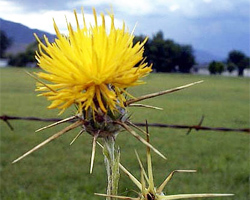Integrated Pest Management for Invasive Species
Integrated pest management is a proactive and preventative approach incorporating a variety of control and treatment options for invasive species. Control and treatment options use a combination of pest management techniques in to suppress pest populations in effective, economical and environmentally sound ways.
Integrated pest management is a process for planning and managing sites to prevent pest problems and for making decisions about when and how to intervene when problems occur. In an integrated pest management program, land managers regularly monitor sites to collect the information needed to decide whether or not action must be taken. A key principle is that it is necessary to take action only when infestations warrant it, not as a routine measure. If treatment is warranted, land managers choose the most appropriate combination of control measures for the site.
A well-developed integrated pest management program emphasizes making changes in the management of the site to prevent invasive plant problems from occurring. This includes protecting and attracting native beneficial species (plants, insects and birds) that help to keep invasive plants at bay. This might even mean changing human activities on the site, such as restricting the use of recreational vehicles, to prevent disturbance that often leads to invasive plant invasion.
Management & Control Steps for Invasive Plants
- Cultural control (or preventive methods): These include plant nutrition, seeding, and choosing strong native plant species that will thrive in the site's ecosystem.
- Manual and mechanical control: These can include digging, pulling, mowing, mulching, burning, and several others.
- Biological control: These include agents (insects and rusts) imported from the area where the invasive alien plants originated. Learn more about biological control.
- Chemical control: These include synthetic and naturally derived herbicides. Where herbicides are used, they should be chosen for compatibility with IPM practices. Application methods can range from very specific, such as stem injection, to a broader application with backpack or other sprayers.
- Evaluation: Monitoring regularly may be necessary to evaluate the efficacy of the IPM program. It is essential to maintain and review records to determine what worked, where improvements should be made, and to determine costs and benefits.
For more information on how to address invasive plants on your property, please refer to this guidebook: 7 Steps To Managing Your Weeds (2004) (PDF, 997KB)
Invasive species are plants and animals not naturally found in B.C. that can potentially harm the province's natural environment or adversely affect people's health.

